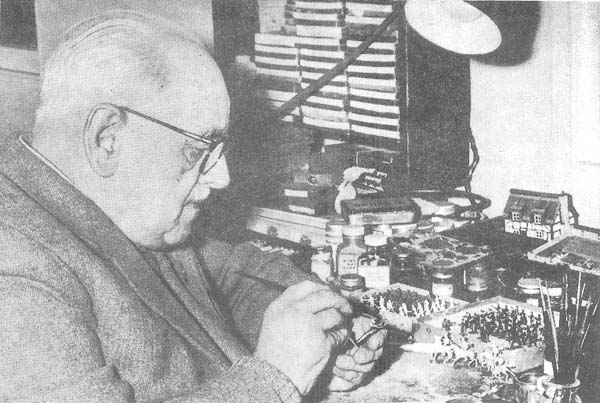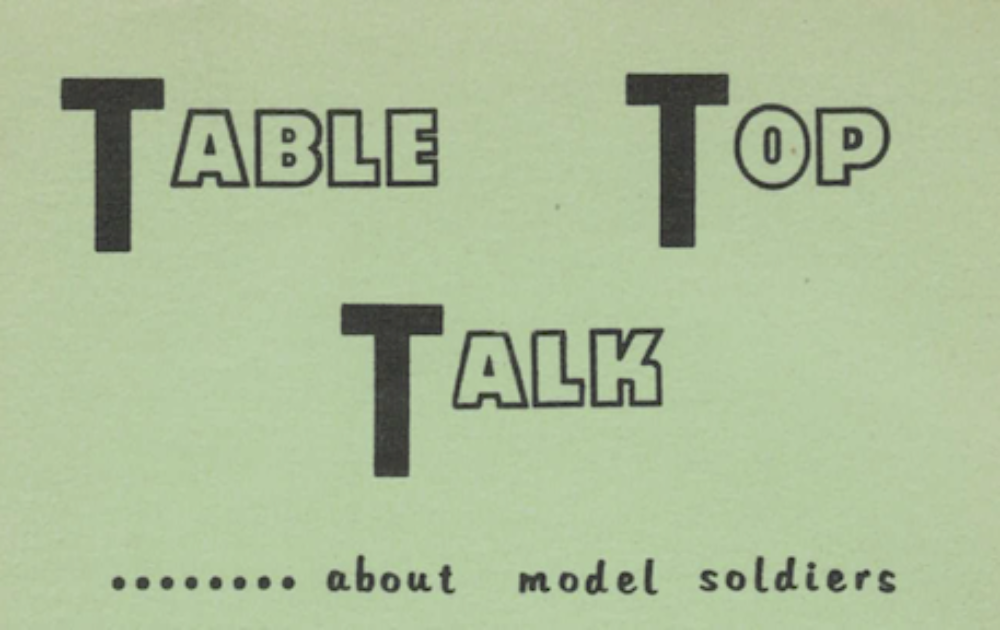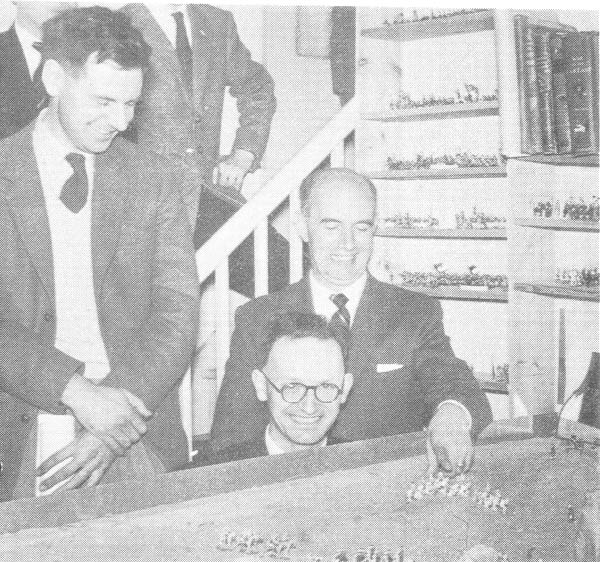While browsing for information concerning ‘Figure Size’ I came upon this piece on John Greenwood. It is one I enjoyed reading many years ago, and though it might be a good time to share this with you. Originally presented in: The War Game Digest – Winter 1962

Born 1893 at Lowestoft, Suffolk. Lived at Scarborough from the age of l month until 1909, in which year I moved to Newcastle to serve an apprenticeship. During this early period of my life the model soldier bug bit me, as during the South African War of 1899-1902 the daily illustrated papers were full of war pictures and my father explained much of the material to; so in 1899, to the question, “What would you like for Christmas?” the answer was invariably, “Soldiers”, and it was a great Christmas: British-made Cavalry, Infantry, Mule Battery, and German-made Field Artillery. This interest was maintained by the Sum er Camps on the local race-course of Volunteers, and later, Territorials, with field days and sham fights. When at Newcastle, there was always something of military interest to be seen or read– troops on Church Parade, books on Army life,and in the papers there were reports on the various Balkan Wars and so forth.
Then, in 1914 out of a summer sky came the Great War. On the fourth of September I went to Manchester and joined the 2/6th Battalion, Manchester Regiment. This was a Territorial Battalion, but what a wonderful lot of fellows to be with. In May 1915 I sailed with 49 other volunteers to replace sick, etc. as the lst Battalion sailed from garrison duty in Egypt to Gallipolli. We arrived at Cape Helles, Gallipoli, in June and I found the lst Battalion fellows as good to get along with as the 2nd Battalion. 1915 Gallipoli; 1916 Sinai Desert Campaign; 1917-18-19 France and Flanders: that was the “Cook’s Tour” and I think I had my money’s worth. For people interested in this sort of thing, the pay was 1/- (about 15 cents) a day when I joined and also for the next three years. I returned to civilian life in 1919 and up to 1936 had various jobs as a salesman, none of which produced a fortune.
In 1936 I was staying with the late Mrs. Ball and her daughter Kathleen, and as some of you may know, began trying to make realistic-looking chessmen, and this started me off on model-making. The whole thing was an “earn while you learn” business for Kathleen and myself. We both had great patience and the ambition to reach the highest standard we were capable of. Gradually the thing developed and we employed girls and taught them to paint. Then came the second Great War and we switched over to making training tables for the Army and the Home Guard. This kept us going, and after the war business came along; at one of the British Society’s meetings the late Otto Gottstein approached us on the subject of figures for dioramas. A team was formed under his direction of Denny C. Stokes to make the dioramas, and Greenwood and Ball to make the figures. Dioramas were made for the R.U.S.I., Arromanches Museum, and the History of the Jewish Nation.
In the last few years Stokes and I have worked together on a wide variety of dioramas, both military and commercial. At present I am working on figures for a series of dioramas he is making of the war—time activities of the Royal Army Medical Corps. Kathleen still carries on with the trade sign of Greenwood and Ball 54 mm. figures and I am concentrating on 1 inch and 3/4 inch figures for collectors. I have also made a few complete dioramas for private collectors, two for the West Point Museum and a third one on the way to competition.
About four years ago, when we were in Broseley, Bill and Helen Imrie called to see us, and we had a very enjoyable day with those two very charming people. Bill and I still correspond and do the odd spot of trade with each other. When the War Game Digest came out, Jack Scruby and I made contact and this started a grand friendship, although we never met. The War Game Digest is something to look forward to, and a most interesting development has been the Scruby and Greenwood War Game figures. I get a real kick out of the narratives of Table Top battles reporting “G&B 3/4 figures were used in this battle”.
Of course, I don’t think it’s possible to make model soldiers for others people and not a want; a few yourself; that leads up to, “What do I collect?” Slowly and laboriously, owing to the time factor, I have during the last few years produced some small 3/4 inch forces, not big enough in numbers to be called armies. They are compact forces of about 200 each; British and German in Tin Hat? with some armoured Cars, Tanks and Lorries; World War l British in Peak Gaps and Slouch Hats; British in full dress 1900; and smaller French forces of the same period.
Building up the country for War Games has been as enjoyable as pre—fishing preparations, and has resulted in a nice collection of Faller buildings with a good but limited range of plastic trees and some home—made ones which look fairly good but are not well known types! Next effort will be the countryside which must be fairly changeable, and this is a very interesting problem to solve. With luck I should have a solo War Game going by next winter.
That is the life—story of old man Greenwood; you may not enjoy reading it, but I’ve enjoyed living it– most of it anyway.








